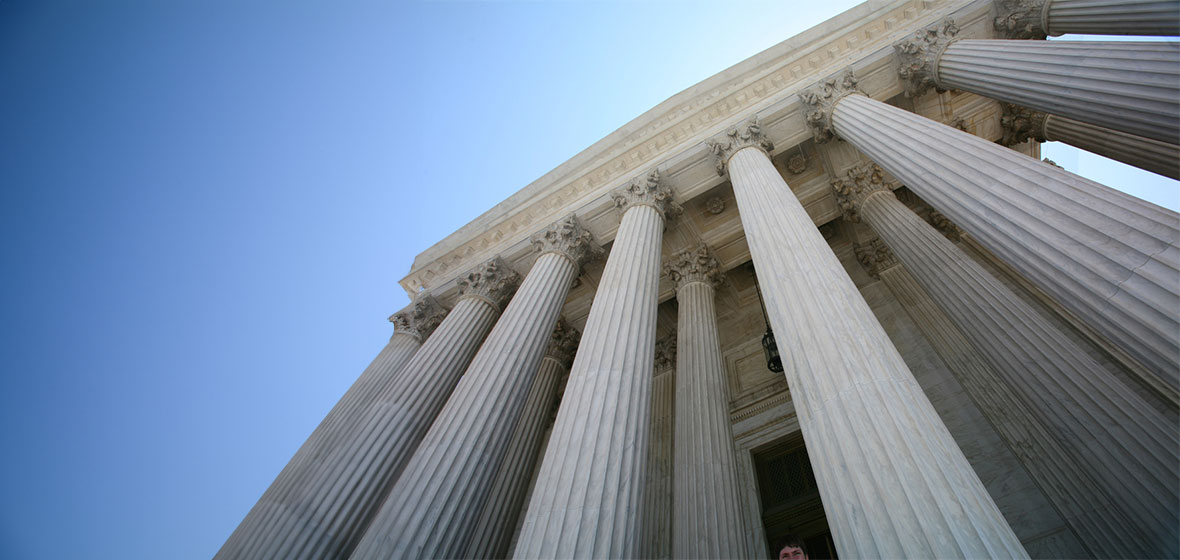This essay is the winner of the 2023 Sir Anthony Mason Constitutional Law Essay Competition, written by Taylor Empeigne.
The Australian Constitution gives rise to a democratic system of government. The ultimate sovereign is the people. Therefore, the Constitution must develop as social, political, and legal circumstances change. In a democratic society, the Constitution (as a living organism) cannot be frozen in time. Constitutional development is achieved through the separation of powers which requires judicial independence. Central to this independence is the freedom to dissent.
This paper argues that judicial dissent plays a foundational role in constitutional law. It injects democratic values into the judiciary. This is achieved through the transparent interpretation of the Constitution which allows the people to criticise and evaluate constitutional development. This argument is considered through the lens of the High Court’s original jurisdiction on matters involving constitutional interpretation.
Unanimity
An examination of unanimous decision-making brings to light the vital role of dissent in constitutional law. Proponents of unanimous decision-making assert the need for certainty and clarity. They suggest that dissent ‘shake[s] the public’s faith in the court’. However, this narrow view diminishes the importance of judicial transparency and independence. Mandating unanimity risks diverting judges from their overarching responsibility to the people, contrary to democratic values. It is true that where unanimity is achieved authentically (without the sacrifice of conviction) it sets a strong precedent and emanates public confidence. However, the suppression of dissent, to achieve purported certainty, diminishes judicial accountability and legal development. This, in turn, weakens public confidence in the administration of justice.
In contrast, dissent acknowledges ambiguities and uncertainties in legal rules. This increases transparency by providing society with a means to evaluate and scrutinise judicial choices. It follows, especially within the High Court’s original jurisdiction, it is the duty of all judges to disclose their independent views. Such a requirement is essential to Australia’s democratic system of government.
A requirement of unanimity inhibits the decision-making process.
Sir Anthony Mason, when reflecting on his experience in Hong Kong, explained that single unanimous judgments promote a higher level of judicial collaboration. Such a process ensures that the final judgment is more thorough and allows society to have a clearer understanding of legal principles. However, certainty should not be at the sacrifice of justice. In Cole v Whitfield the High Court persisted with an ‘intensive collective effort’ to deliver a unanimous judgment relating to s 92 of the Constitution. The strength of this decision brought clarity to the interpretation of s 92. However, it did not resolve every issue surrounding the construction of the section.
Sir Anthony Mason explained that the judgment was ‘expensive in terms of time and effort’. This reiterates that a requirement of unanimity is inconsistent with democratic values. Long, drawn-out trials (particularly on constitutional interpretation and decision-making) arguably diminishes the public’s faith in the court. This is because such a process leaves the executive and legislature unrestrained for longer than necessary.
Thus, a requirement of unanimity means that the judiciary would fall short of their overarching duty to people. In addition, the absence of real consensus between judges in a unanimous final judgment weakens its ability to assert real legal principle.
“Consequently, a requirement for unanimity fails to serve a democratic society, it purports certainty at the expense of key democratic values.”
Freedom to dissent is fundamental to the democratic system of government enshrined in the Constitution. It affords the judiciary latitude to interpret the Constitution and scrutinise principles that do not accord with current (or emerging) societal values. Thus, increasing the public’s faith in the administration of justice whilst also contributing to constitutional development. However, the doctrine of precedent ensures that public interest is protected against rogue decision-making. The judicature system of the common law is underpinned by judges understanding their role to safeguard consistency.
This was evinced in Queensland v Commonwealth where Gibbs and Stephen JJ resisted the urge to dissent. The case concerned the correctness of the Western Australia v Commonwealth decision. Despite dissenting in the 1975 decision, the justices refused to form a majority that would alter the constitutional power in such a short space of time. The justices understood that a change in the law should not be founded on a change in the Court’s composition. Such a decision would cause instability and lasting injury to the public’s conception of the court.
Conversely, Barwick CJ and Aickin J held the view that a dissenter should not falter simply because reform occurred sooner than anticipated. Nonetheless, Gibbs and Stephen JJ still held their overarching position yet noted the value of maintaining precedent. This example illustrates the vital role judicial freedom plays in democracy. Judges are reposed with the latitude to develop the law. Though there are competing interests. Therefore, in a democratic society the judiciary must be afforded the individuality to consciously justify an alternative view or to promote institutional coherence. The answer will not always be to dissent. However, the latitude to dissent enhances the public’s confidence by evincing judicial appreciation for the deliberative process required in a democratic society.
An important intellectual function of dissent is that it allows the plurality to be tested against competing views. Dissent provides fertility for debate which is fundamental to democracy. In turn, this increases judicial accountability. Particularly in constitutional cases where elected officials cannot alter the meaning given to constitutional language. Therefore, dissent encourages the majority to be more precise and clearer in their legal reasoning.
By offering a competing viewpoint, dissenting opinions ensure the majority opinion is better understood by comparison to alternate reasoning. This is so because the authors strive to make their viewpoint irrefutably compelling. French CJ notes that in cases of constitutional interpretation reasonable minds may differ. Therefore, dissent remains relevant to underscore the correctness of the majority decision.
The importance of dissent is also reiterated by the need for exploration of those competing views on which reasonable minds may differ. By providing different and nuanced approaches to constitutional interpretation dissent informs Parliament and the people of legal contentions and potential development. Therefore, dissent is vital to stimulating legal debate, especially in contentious constitutional matters. Dissent aids in understanding the majority decision. The most important consequence is that dissent instils democratic values into the judicature as it transparently paves the future for constitutional development.
Constitutional Evolution
A democratic society requires constitutional evolution. The law must reflect the social, political, and legal values of the time. The strongest agent for constitutional evolution is the court itself. Section 128 of the Constitution provides the ‘mode of altering the Constitution’. Such a process can only occur through a referendum, whereby the majority of people in the majority of states agree to the proposed change.
Of the 45 proposed constitutional changes in Australia, only 8 have been successful. No less the High Court is given original jurisdiction to interpret the Constitution. Justice Kirby expressed that it would be inaccurate to govern the meaning of the Constitution with reference to the minds of imperial legislators in 1900. Therefore, it is the judiciary’s role to ensure the Constitution accords with contemporary needs and values.
Dissent plays a vital role in this process. It is an appeal to a future day where social, political, and legal circumstances have changed. In Henry v Boehm Stephen J understood the notion of indirect discrimination. This was at a time when the court evaluated discrimination on the basis of formal equality. The regulation in question required lawyers seeking admission in South Australia to reside there for three months prior to admission. On one view the legislation was equal because the three-month period applied to people both residing and not residing in South Australia. This was the view taken by the majority. On another view persons ordinarily residing in South Australia were at an advantage. The latter view was adopted by Stephen J in dissent. This reasoning was an appeal to a different time. A time when society’s understanding of discrimination had evolved.
Stephen J was vindicated sixteen years later, through a unanimous court delivering seven separate judgments. Justice Stephen’s judgment was foundational in this constitutional development. This is illustrative of the role dissent plays in constitutional development. Dissents are the sowing of seeds that have the potential to grow into views accepted by the majority of the Court. Dissent reflects changing values within a democratic society and, when vindicated, creates societal change pursuant to the Constitution.
Additionally, dissent enables constitutional progress whilst facilitating change in an open and measured way. This process is reflective of a democratic society, where the judiciary’s ultimate duty is ‘to do right by the people according to the law’. Stare decisis is a fundamental doctrine. The law must be consistent and certain to ensure the effective functioning of the legal system. It follows that the justices of the High Court cannot ignore the pages of history and arrive at their own judgment without regard to pre-existing principles.
However, too rigid adherence to precedent can lead to injustice. Particularly in constitutional cases where judicial missteps cannot be corrected by the legislature. Therefore, it is arguable that dissent reduces the strength of the majority from becoming a settled point of law. It keeps the opposing view alive, allowing legal principles to be questioned and altered gradually over time. Isaacs and Higgins JJ’s persistent dissent was vindicated in Amalgamated Society of Engineers v Adelaide Steamship Co Ltd (‘Engineers’). This meant that the majority view in Engineers had been previously examined by justices of the High Court. Those opinions in dissent were published on ‘the books’. This ensured the majority position in earlier decisions were not unopposed.
Similarly, the majority view in McCloy v New South Wales that introduced a structured proportionality assessment into freedom of political communication legislation is not yet settled. Both Gageler and Gordon JJ openly voice their scepticism about the doctrine. Therefore, the future of the doctrine will be evaluated over time as the High Court further examines the soundness of the doctrine. This is another illustration of dissent facilitating democracy by allowing measured constitutional development.
Judicial Oath
Dissent enables judges ‘to do right to all manner of people according to the law’. The very essence of a free society (democracy) is the right for every individual to have access to the impartial application of the law. Consequently, the only masters of our High Court Justices are truth, independence, and their individual conscience. Dissent enables judges to fulfil their role in the interpretation of the Constitution. They are not required to succumb to artificial unanimity. Instead, it is their duty to protest the misapplication of legislative powers and declare the law true. This independence is not for personal benefit, it is foundational to the effective administration of justice in a democratic society. Isaacs J reiterates this by expressing that a judge’s sworn ‘loyalty is to the law itself’. Therefore, judicial minorities cannot be ‘muzzled’. They are to remain independent not only from the other two branches of government but also from one another.
The ability for justices to closely scrutinise the reasoning of their peers assists in legal, and in particular constitutional development, by shifting conventional ways of thinking. Dissent requires judges to provide a thorough justification for their decision and ensures they are doing justice. It follows that the ability to dissent is embedded within the Constitution through the separation of powers.
Separation of Powers
The role of judicial dissent (within a democratic system of government) is embedded into the Constitution through the separation of powers. The Constitution sets the separate powers afforded to the legislature, executive and judicial branches of government. The Constitution emanates judicial independence by affording the High Court Justices with tenure and conditions of service. This security cannot be altered by the other two branches of government. The decentralisation of authority creates a system of checks and balances. It ensures that constitutional interpretation (and development) is not influenced by the executive or legislature. Further, it permits the justices to participate fully, advancing their individual views, whether those are majoritarian. This is evinced by Kirby J’s dissent in Kartinyeri v Commonwealth where he endorsed an interpretive principle based on fundamental human rights.
Ultimately, Kirby J believed the constitutional race power did not support the imposition of laws detrimental to a particular race. In his view the interpretation of the Constitution must reflect changing Australian values. Therefore, in light of the success of the referendum in 1967, it was clear that the constitutional amendment did not empower Parliament to enact laws detrimental to the First Peoples of Australia. Justice Kirby’s dissent in this matter not only demonstrated his independence from the other two branches of government but also his independence from other members of the bench as the only dissentient. This dissent demonstrates the robustness of the separation of powers: where a minority view was expressed contrary to the views of Parliament and the other justices of the High Court.
Therefore, dissent is foundational to constitutional law as it endorses the separation of powers. It allows individual justices to fulfil their ultimate role to the people whilst transparently contributing to the evolution of the Constitution and is a necessary condition of the judicial oath.
A vital role in constitutional law
Judicial dissent is a prerequisite of a democratic system of government. It plays a vital role in constitutional law by ensuring the application and interpretation of the Constitution is open and transparent. This gives the people the ability to scrutinise and evaluate the decision-making process. An examination of mandatory unanimity demonstrated that judicial dissent is fundamental to democracy. It ensures the judiciary fulfils their ultimate role to society. Further, an exploration of constitutional evolution validated dissent as an appeal to a different time when the circumstances of society have evolved. Therefore, dissent ensures the Constitution is not frozen in time. Rather, it reflects the evolving values of a democratic society. In addition, judicial dissent ensures the fair development of the Constitution for the Australian people. It guarantees judicial independence and upholds the separation of powers. Consequently, judicial dissent plays a vital role in constitutional law by injecting democratic values into the judiciary.
This is the online version of the prize-winning essay. If you wish to read the full version, including footnotes and bibliography, please email us.




